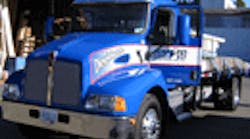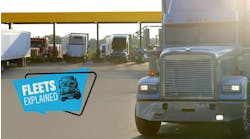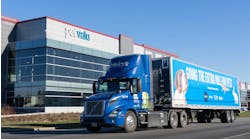A new survey finds that while alternatively fueled vehicles may be growing, more and more buyers do not see ‘green’ as the only purchasing factor. According to the report, six out of 10 consumers are more likely to buy a hybrid or all-electric vehicle only when it is superior to gasoline- or diesel-only models in every way.
According to research conducted by consulting firm Accenture, being “green” is not enough by itself to convince consumers to buy alternatively powered vehicles. In-vehicle services that satisfy different customer needs – including commerce, entertainment, safety, maintenance, communication and onboard navigation – not only are key influences on consumer choice, but also play a key factor in the development of more fuel efficient vehicles.
“Our study suggests that while consumers are increasingly embracing and understanding the value of alternative vehicles, they still want models that represent a new phase in the evolution of the automobile,” said Luca Mentuccia, managing director of Accenture’s automotive group. “Both OEMs and suppliers need to start building strategic partnerships that will lead to distinctive capabilities, particularly around safety, environmental protection and entertainment.”
The Accenture study surveyed more than 1,800 consumers and found interests in attributes other than fuel efficiency is increasing, with just 36% of respondents citing higher gas prices as a reason to buy a green car. Moreover, those that have driven a hybrid or electric vehicle rate fuel efficiency as being very good to excellent, but most rate the ride, performance, style and maintenance as good at best, the consulting firm reported.
“I think the Accenture report raises some instructive issues for clean vehicles such as hybrids and electric vehicles,” Bill Van Amburg, senior vp for California-based Clean Transportation Technologies and Solutions (CalStart), told FleetOwner.
“These issues are not absolute determiners of the market but they do show the limitations of the market that advanced vehicles must address beyond green,” he noted. “But remember the consumer light-duty market is a lot different than the commercial vehicle market, as commercial users are driven more directly by life-cycle costs and cost savings. As hybrids and EVs deliver better savings on fuel, maintenance and even a better match to some duty cycles, they will be picked up more.”
Indeed, according to a report issued by consulting firm Pike Research late last year, cumulative sales of hybrid vehicles in the fleet sector should total nearly four million worldwide between 2009 and 2015, with hybrid fleet sales increasing from 300,000 units in 2009 to more than 830,000 units by 2015.
“The biggest growth categories for fleet hybrids are medium/heavy duty trucks and buses,” noted Clint Wheelock, Pike’s managing director. “Manufacturers are beginning to turn their attention beyond light-duty vehicles to the efficiency opportunities for hybrid drive in heavy trucks.”
He projected that in North America, nearly 10% of buses sold in 2015 will be hybrids, with North America the leading region in terms of hybrid fleet penetration, with hybrids reaching 8% of all fleet sales in the next five years with government, university, and utility company fleets the biggest purchasers.
CalStart’s own research indicates that between 40,000 and 60,000 medium- and heavy-duty hybrid trucks are expected to be on the road in North America by 2015.
“However, all that being said, there is no doubt buying or selling ‘green’ alone is a limited market,” stressed CalStart’s Van Amburg. These new vehicles do not need to deliver the same performance in all cases, though, but what they deliver must be valuable in a new way that makes them more useful, or useful in a different way, than the vehicles they replace, he added.
“However, it is clear the market we know today will not be the market of five years from now,” Van Amburg said. “Light, medium, and heavy-duty vehicles will be facing higher fuel economy requirements in the next five years, as well as reductions in carbon emissions. So market requirements defined in part by regulation will drive some of the vehicle design mix. It will not be a choice made ‘for’ green; it will be how some vehicles meet requirements.”



